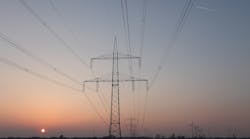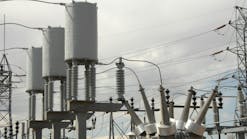A growing chorus of experts now believe that new grid infrastructure in North America must facilitate a massive reduction of greenhouse gas emissions while, at the very same time, protecting the electrical transmission system against natural and humanmade threats. An ambitious project, The North American Supergrid (aka, NAS, or Supergrid), as proposed by the Washington DC-based non-profit Climate Institute, aims to address this problem.
The United States has vast resources of renewable energy: wind energy on the Great Plains and in the Midwest, solar energy in the Southwest, geothermal energy in the Rocky Mountains and Great Basin, and hydropower in the Northwest and Southeast. Unfortunately, the variability and dispersed nature of renewable energy resources has made it difficult to optimally utilize them, given that the existing electrical grid was not originally set up to transmit electricity over long distances from renewable energy supply centers to major load centers. As a result of these factors, renewable energy resources remain significantly underutilized in the U.S., even as the cost of electricity generated from wind and solar sources has declined sharply in recent years.
As of today, North America’s electrical transmission infrastructure is troublingly unprepared for modern threats and natural hazards. If a terrorist organization or rogue state, for example, obtained and detonated a nuclear weapon high above the United States, it would send a powerful electromagnetic pulse (EMP) that would overload transmission infrastructure, taking the grid down for years. A similar effect would occur in the event of a solar storm like the famous Carrington event of 1859, a completely unavoidable and unpredictable event.
NAS would make electricity infrastructure more resilient and greatly reduce power sector carbon emissions.
The NAS has been proposed as a nodal high voltage direct current (HVDC) network. As a largely underground transmission systems, it would extend across the lower 48 states, thus creating a national electricity market. The Supergrid would create a resilient backbone to the existing system and make clean renewable energy competitive with fossil fuel-generated energy in open markets.
Adding the Supergrid atop the existing regional alternating current distribution system would provide the flexibility and reliability that would enable expanded use of electricity across the economy, without altering how electricity is currently used in homes or businesses. This would also afford electromagnetic pulse (EMP) and geomagnetic disturbance protection not garnered from the current system, as well as much needed fortification against increasingly common natural disasters.
The NAS concept is based on research summarized in the MacDonald et al. publication released in 2016 in “Nature Climate Change”. Through extensive temporal and spatial modelling of the variable weather patterns present in the continental United States, the MacDonald et al. publication surmised that solar and wind power penetration into the electric grid could be achieved through the construction of an integrated national electricity market, without raising electricity costs or sacrificing the reliability of power delivery to consumers. MacDonald et al. idealized that a single national market (built from low-loss, high-capacity direct current cabling) would allow the instantaneous transmission of excess power (often generated in areas with little immediate demand) to large load areas where it can be utilized, better integrating both large scale utilities as well as distributed systems in a non-preferential market based solely on cost. The optimization technique is unbiased towards any one energy source and is mainly dependent on forecasted technology costs. The authors estimated that the evolution in the electricity market that such a grid would prompt could result in nearly an 80% reduction in power-sector carbon emissions, as low-cost wind and solar generated power would displace more expensive fossil fuel-based electricity generation in a competitive market.
Preliminary analyses by the Climate Institute confirm both feasibility and cost-effectiveness.
While MacDonald et al.’s article explored the NAS’s potential benefits and implications, a number of other practical aspects were left for additional investigation. The Climate Institute has conducted a number of feasibility analyses to assess the practical challenges associated with the creation of a mostly underground HVDC transmission overlay system, considering practical aspects such as how best to meet the need for rights of way, compatibility of soils and HVDC cabling, natural-disaster and national-security co-benefits from undergrounding, and the projected costs for a few representative network lines.
The published analyses indicate that the NAS would do the following:
- improve national security by strengthening structural integrity and EMP protection;
- be feasible at modest cost;
- contribute to mitigation of climate change by allowing a much higher penetration of renewables than is projected to be possible with the present grid system; and
- be a cost-effective addition to the electric grid, even in the absence of a price placed on carbon and even assuming that there is not a sustained drop in average natural gas prices persisting over the next three decades.


